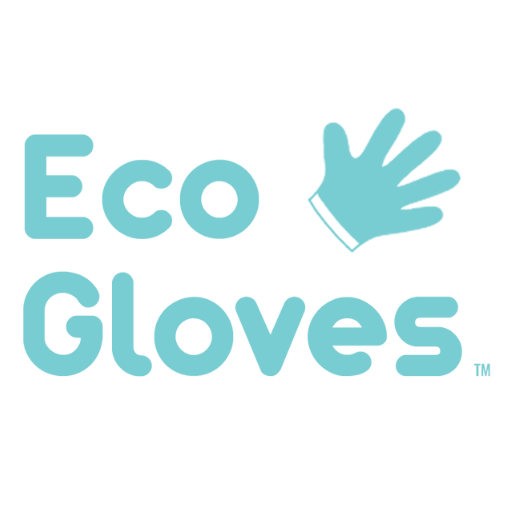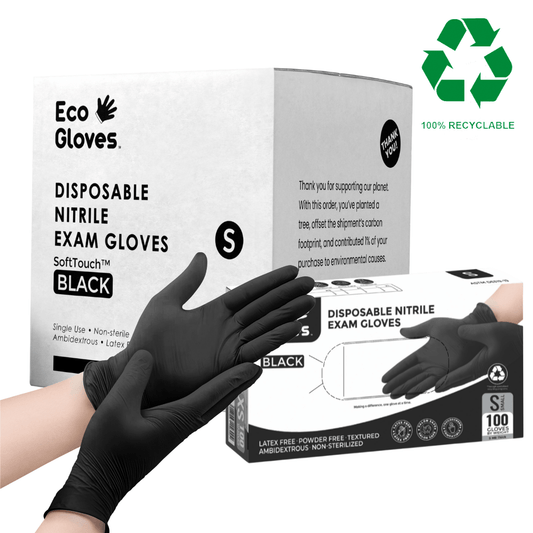How to Properly Care For and Dispose of Gloves
Eco Gloves

Proper care and disposal of gloves is an important aspect of ensuring the effectiveness of these protective barriers. In this article, we will explore the proper ways to care for and dispose of different types of gloves, as well as some best practices for maintaining the integrity of these protective barriers.
Topics Covered
- Know Glove Storage Requirements
- Inspect Gloves for Signs of Wear or Damage
- Check Expiration Dates
- Know How to Properly Dispose of Gloves
- Key Takeaways: How to Properly Care For and Dispose of Gloves
-
Frequently Asked Questions About Caring For and Disposing of Gloves
Know Glove Storage Requirements
One of the most important considerations when it comes to caring for gloves is storage. It is important to store gloves in a dry, cool place away from direct sunlight or heat sources. Proper storage also means that gloves must not be folded and need to be kept out of humidity, ozone, and any chemicals or substances that could damage the material. These measures will help to prevent the gloves from becoming damaged or degrading prematurely and over time. It is also important to keep gloves away from sharp objects or other hazards that could puncture or tear them.
Inspect Gloves for Signs of Wear or Damage
To prevent cross contamination, it is important to inspect gloves for signs of wear or damage immediately upon donning them. This includes checking for holes, tears, or other types of damage that could compromise the integrity of the gloves. If any damage is found, the gloves should be replaced immediately.
Check Expiration Dates
Like many manufactured goods, disposable gloves often come with best used by or expiration dates to indicate how long the gloves will keep its integrity and best performance for the user. Most gloves have a typical storage life of up to five years, provided that they are kept in their proper packaging and under proper storage conditions. Latex gloves, made from natural rubber, tend to deteriorate faster than synthetic ones. They have a short shelf life of three years only. However, if kept well, you may use them even after three years of storage.
If you observe that a glove has become stiff, fragile, or has lost its flexibility, or has become excessively pliable and doesn't bounce back to its original shape after being stretched, it is likely that the glove has deteriorated and should not be used. Additionally, a change in color of the glove is also an indicator that it should not be worn, and/or should be changed out immediately with a newer one.
The good news is that there are still many uses for gloves beyond their expiration date (as long as the activity is unrelated to healthcare with low exposure to disease-causing agents) such as training, demonstration, gardening, picking up or handling dirty items for a short time, etc.
Know How to Properly Dispose of Gloves
Proper disposal of gloves is also an important aspect of glove care. After use, gloves should be properly disposed of in a designated waste container. This is especially important in industries such as healthcare, where gloves may be contaminated with bloodborne pathogens or other infectious materials. In these cases, it is important to follow proper protocol for the disposal of hazardous materials.
Follow Industry-Specific Regulations for Proper Disposal
In addition to following these best practices for glove care and disposal, it is also important to follow any industry-specific regulations or guidelines. For example, the food industry has strict guidelines for the use and disposal of gloves in order to prevent the contamination of food products.
Consider Environmental Impact
Another important consideration when it comes to glove disposal is the environmental impact. Disposable gloves can create a significant amount of waste, and it is important to find ways to reduce this impact. Some options for reducing the environmental impact of disposable gloves include recycling programs or the use of biodegradable or compostable gloves.
Understand Proper Disposal of Biodegradable and Compostable Gloves
For biodegradable gloves, these can be disposed of with regular waste. For compostable gloves, these must go into a compost bin to receive the benefits of turning these gloves into rich soil. But again, one must follow proper protocol for disposal of hazardous waste if the gloves become soiled with contaminating matter.
Proper care and disposal of gloves is essential for maintaining the effectiveness of gloves as protective barriers to potentially harmful or contaminating matter. This includes storing gloves in a dry, cool place, cleaning and disinfecting them as needed, inspecting them for signs of wear or damage, and disposing of them properly. By following these best practices and any industry-specific regulations, workers can help to ensure the safety and effectiveness of their gloves.
Got questions or need assistance on finding the right gloves for your business or workplace? Contact us here. We'd love to hear from you!
Key Takeaways: How to Properly Care For and Dispose of Gloves
-
Store Gloves Correctly – Keep gloves in a cool, dry place away from sunlight, heat, humidity, ozone, and chemicals to prevent deterioration.
-
Inspect Before Use – Check for holes, tears, stiffness, or color changes; replace damaged gloves immediately to maintain protection.
-
Know Expiration Dates – Most gloves last up to five years in proper storage; latex gloves have a shorter shelf life of about three years.
-
Dispose of Gloves Safely – Follow proper disposal protocols for your industry, especially in healthcare and food service, to prevent contamination.
-
Follow Industry Regulations – Adhere to sector-specific guidelines to ensure compliance and safety.
-
Reduce Environmental Impact – Consider biodegradable or compostable gloves, and dispose of them according to their material type.
-
Special Disposal for Eco-Friendly Gloves – Compostable gloves should go in a compost bin; biodegradable gloves can be disposed of in regular waste unless contaminated with hazardous material.
👉 Proper care and disposal not only extend glove life and effectiveness but also help protect the environment and ensure compliance with safety regulations.
Frequently Asked Questions About Caring For and Disposing of Gloves
-
How should gloves be stored to maintain their quality?
Store them in a cool, dry place away from direct sunlight, heat sources, chemicals, and sharp objects to prevent deterioration and damage.
-
Do disposable gloves expire?
Yes. Most gloves have a shelf life of up to five years if stored properly. Latex gloves generally last about three years.
-
How can I tell if my gloves have gone bad?
Signs include stiffness, brittleness, excessive softness, loss of elasticity, or noticeable color changes.
-
What is the safest way to dispose of used gloves?
Place them in a designated waste container, and follow hazardous waste disposal protocols if they are contaminated with infectious or harmful materials.
-
Can expired gloves still be used?
They can be repurposed for non-medical, low-risk tasks such as gardening, cleaning, or training, but should not be used for healthcare or food handling.
Further Reading
- What Makes Biodegradable Nitrile Gloves More Sustainable or Eco-Friendly?
- Biodegradable Disposable Gloves: A Step Towards Sustainability in Industrial Workplaces
- Biodegradable Nitrile Gloves | Everything You Wanted to Know















